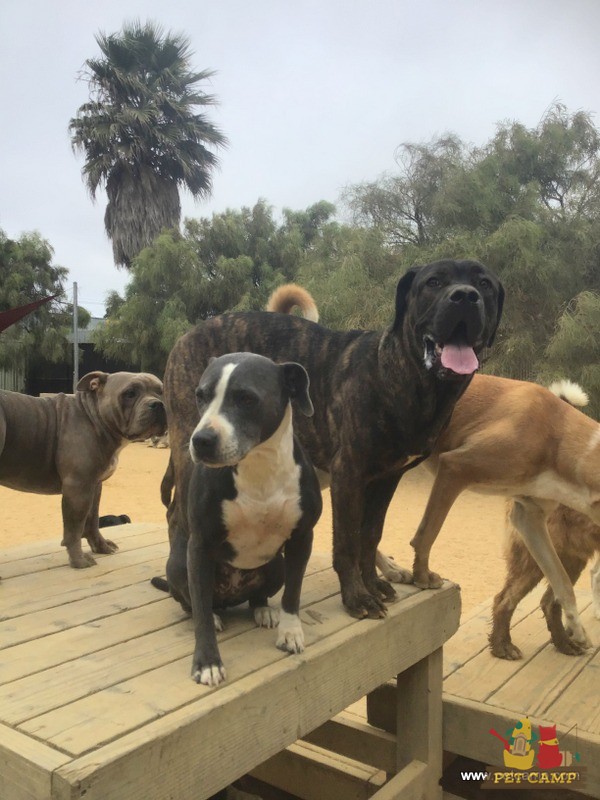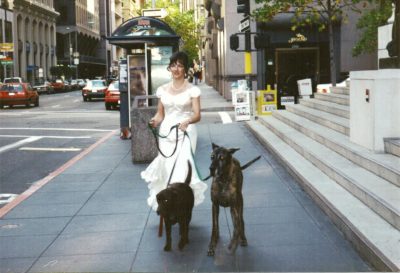Why should we sometimes avoid our dog greeting other dogs?
 Perhaps you have this image of your dog strolling down San Francisco’s 24th Street on a bright Saturday morning politely greeting every other dog you see, all while you sip your mocha-infused organic coffee with almond milk from almonds grown with gray water from a hot yoga studio without spilling a drop. Then again, you might have a real dog and there are reasons your real dog might be better off not bounding over to every dog they see. Here are the two big ones:
Perhaps you have this image of your dog strolling down San Francisco’s 24th Street on a bright Saturday morning politely greeting every other dog you see, all while you sip your mocha-infused organic coffee with almond milk from almonds grown with gray water from a hot yoga studio without spilling a drop. Then again, you might have a real dog and there are reasons your real dog might be better off not bounding over to every dog they see. Here are the two big ones:
- Contagions: After 18 months of being careful around every human you meet on the street, it might be hard to hear this but you might want to think the same about the dogs you meet too. There are a range of contagious diseases that even an asymptomatic dog might have that could be passed to your dog. Just like with humans there are vaccines for many of these diseases but when out and about it’s impossible to know which dog is or is not vaccinated.
- Socialization: This term gets thrown around all the time when it comes to dogs. But not every dog wants to socialize and the greeting your dog gets from this new “friend” might not be very friendly.
How to get your dog not to greet other dogs.
 So what’s a smart pet parent to do? You don’t want to make a scene and embarrass your dog in public by yelling “no,” “stay away,” but you still need to be able to create time and distance (the almost foolproof way to de-escalate a dog situation) and here are two training ideas for that.
So what’s a smart pet parent to do? You don’t want to make a scene and embarrass your dog in public by yelling “no,” “stay away,” but you still need to be able to create time and distance (the almost foolproof way to de-escalate a dog situation) and here are two training ideas for that.
- Distance: Training your dog to create distance from another dog is the ability to get your dog to both come (if your dog is either off leash or too far ahead or behind you) and then to follow you or be moved from one side of you to the other. In the beginning, like almost all dog training, it starts with luring your dog into the correct behavior with treats. After the behavior begins to be established you can add verbal cues for the required behavior.
- Time: Sometimes creating distance on a busy sidewalk isn’t an option. In those instances you can still create time by having your dog focus more on you than on the other dog. You might hear pet parents refer to this as “watch” or “focus” but the technique is the same: you want to use a treat to get your dog to pay attention to you and not the other stimuli. You start with a treat in one hand and as your dog makes eye contact with you and sees the treat move the treat up to your chin/nose. Your dog will follow your hand and the treat, ignoring the other dog. After practice you can add the verbal cue and then do this even when you don’t have a treat at hand.
Lastly, it’s ok to say no (just politely, if you can) to other dogs and other pet parents who want to have their dog greet yours. Simply ask that you and your dog’s space be respected. You can get more hints and details on this topic here.
Thanks for reading.